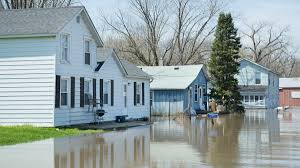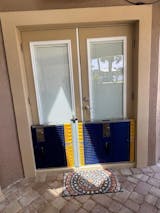Whether you suffer from annual floodings due to snowmelt or heavy rainfalls or want to prepare for the disaster by authorities’ warnings and reports—it is always better to research each flood protection solution and make an informed decision.
Today, customers often choose between two popular solutions for flood control: the classical method of sandbagging and innovative approaches such as temporary Flood Gates. In this article, we will compare these methods according to several parameters
Flood protection should be easy to install, efficient, and reasonably priced.
This chart is based on the questions and concerns of our everyday customers: if you have any questions or comments after reading this article, please feel free to contact Dam Easy.
Due to various factors, such as the topography of your land and changes in water levels during floods, median numbers may differ from those we have provided here.
Please contact the Environmental Agency or your local Emergency Services to find out more about how you can protect yourself.
Sandbagging
When constructing a sandbag dam, you must leave enough space between the dam and the walls of your building to prevent water from flooding immediately inside should the wall fail.
Preparing the area properly is important. First, remove all of the sand and ice; then clear away fallen leaves or other debris that might alter where your dam will be built. Next, make sure that you soften up any part of a riverbank on which you would like to build—this way it won’t crumble under pressure from heavy water levels during flooding season!
Flood Gates
Floodgates are installed directly in the doorway of your building or gate passage. They may also be used to protect you're garage or basement.
There is no need to prepare the doorway for the floodgate installation. The device itself has airbags that can be pumped after installation to fill the passage thoroughly and prevent water access.
However, you must inspect your building`s walls thoroughly and regularly. Even the smallest crack or leakage may become an open gate for water into your house in case of massive flooding.
Amount and costs.

Sandbagging.
Let`s consider that we are preparing to build a 100 linear feet dike.
To create such flood protection, you will need about 2000 bags for a 2-feet tall dike. Considering the cost of the material and delivery, one filled sandbag would cost you about $3. It means that a 100 linear feet dike would cost you about $6000.
Of course, the numbers are variable. Local emergency services provide their assistance in many regions, and the dike will come out much cheaper. Big chances, you will need a much more modest dike due to a minor threat.
However, if you have to face floods regularly, sandbagging may appear a pretty costly solution for you and your local government. Another thing to remember is that sandbagging is a one-time solution, meaning you will have to renew it (and pay again) with every new flood.
Flood Gates
The cost of comprehensive protection using floodgates would depend on the size, architecture of your property, and the number of doorways and passages that can welcome water into your house.
You may also face some additional payments if you have to install connection poles for several flood gates if you have to protect a large garage or gate passage.
However, there is one crucial aspect: floodgates and their accessories are a one-time investment. It means that you will have to purchase them once and then use them for many years. In other words, your investment into Flood gates pays off faster and does not require any additional payments.
Installation
Sandbagging
Technically, installing your sandbagging dike is a pretty easy procedure that didn`t change much during the centuries that sandbagging has been the most reliable anti-flooding solution.
To set your sandbags properly, you should:
-
Fill the bags approximately half full;
-
Put bags on top of each other in a "brick wall" manner. Make sure to lump the unfilled part of each bag under the fillet half of the top one;
-
Tamp each new layer;
-
Make sure that your bike is 3 times as thick as it is high. It means that a 2 feet tall dike should be 6 feet wide for maximum protection.
Flood gates
Despite their innovative nature, floodgates don`t require any special knowledge, skills, or effort for proper installation:
-
Place your flood gate into the flood reveal;
-
Extend flood pannels and inflate the pump to make the construction tight;
-
Use the pump to activate the inflatable parts and seal the doorway on the sides and the bottom.
You may need to replace the inflatable parts with time due to natural wear-off. After replacement, your flood gates will serve you as well as new ones.

You may also install an additional security cove to protect the control parts of your barrier.
This job can easily be done by just one person and does not require any assistance from a handyperson or any other professional.
Efficiency
Sandbagging
Sandbags have been considered the most efficient and reliable anti-flooding solution for ages. Once installed and sealed properly with the additional layer of nylon, sandbags are efficient enough to divert floodwater away from your building and minimize damage.
Technically, sandbags are considered safe and efficient in about 80% of cases, which is a pretty good rate for most of the flooding events reported worldwide today. However, one should not expect a water-tight seal from sandbagging simply due to the laws of physics and water`s ability to turn even the slightest breach in the construction into a welcoming gate.
Flood gates
Due to their optimal 28`` height and inflatable parts, flood gates provide a safe and sound seal to your doorways and passages. You may install connection poles to protect advanced passages like garage gates or barn doors. It makes floodgates the most reliable, versatile solution available on the modern market.
Contact Dam Easy today and learn about our innovative anti-flooding solutions for all kinds of buildings and properties. Our qualified experts will answer all your questions and provide a personalized solution based on your property`s measurements and specifications.



















